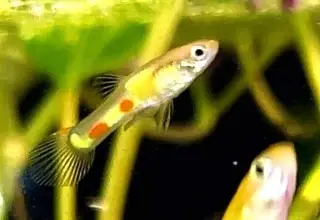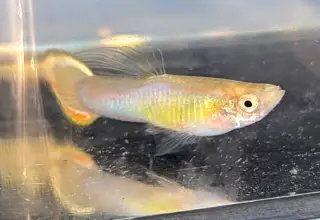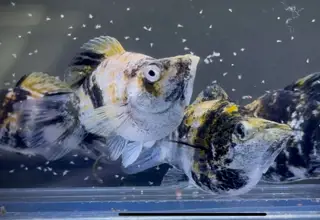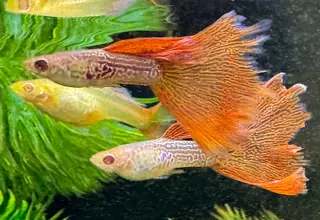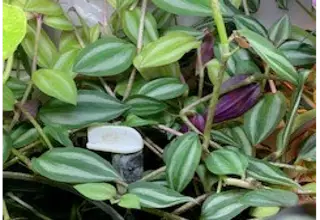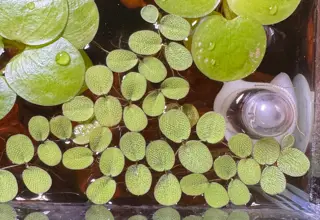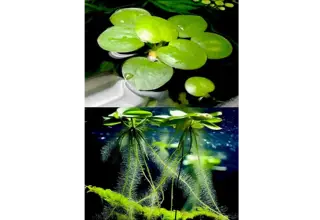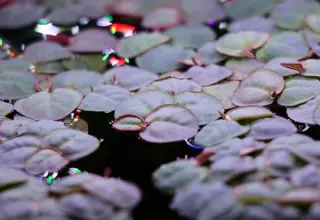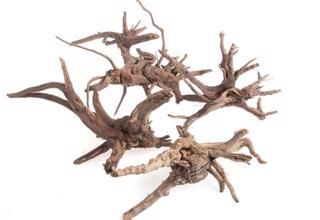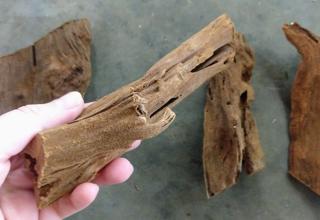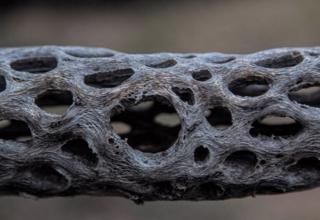Cryptocoryne Spiralis: Care, Planting, Propagating & More
Posted by Miles Harrison on 11/11/2022
We use affiliate links and may receive a small commission on purchases.
Cryptocoryne Spiralis also referred to as Crypt Spiralis, is a plant that’s been dramatically increasing in popularity amongst planted tank hobbyists. This easy-to-care-for plant serves as an excellent mid-ground or background plant and has a much faster growth rate than the similar-looking java fern.
Whether you’re new to aquatic plant keeping, or a seasoned aquascaper, we guarantee you’ll love all this plant has to offer. In this post, we’ll give you the full rundown about this plant, after reading, you’ll have the proper knowledge to decide whether or not Cryptocoryne Spiralis might be the right choice for your next aquascape!
December's Giveaways on Light Fish
Species Summary
If you’ve never owned a Crypt, you may have heard that this aquatic plant genus is difficult to care for. These plants are infamous for melting during their transition period after being introduced to a new aquarium. While some Cryptocoryne species have a reputation for being more difficult than others, the Cryptocoryne Spiralis is an excellent option for hobbyists looking for an introductory crypt.
Known for its narrow and wavy leaves, this beautiful plant makes an excellent choice for aquarists looking to purchase a midground or background plant. Native to rice fields in Western India where it is considered to be a weed, Cryptocoryne Spiralis was scientifically described in the year 1830. The submerged appearance of this plant differs slightly compared to when it’s grown emersed, but both versions are quite attractive.
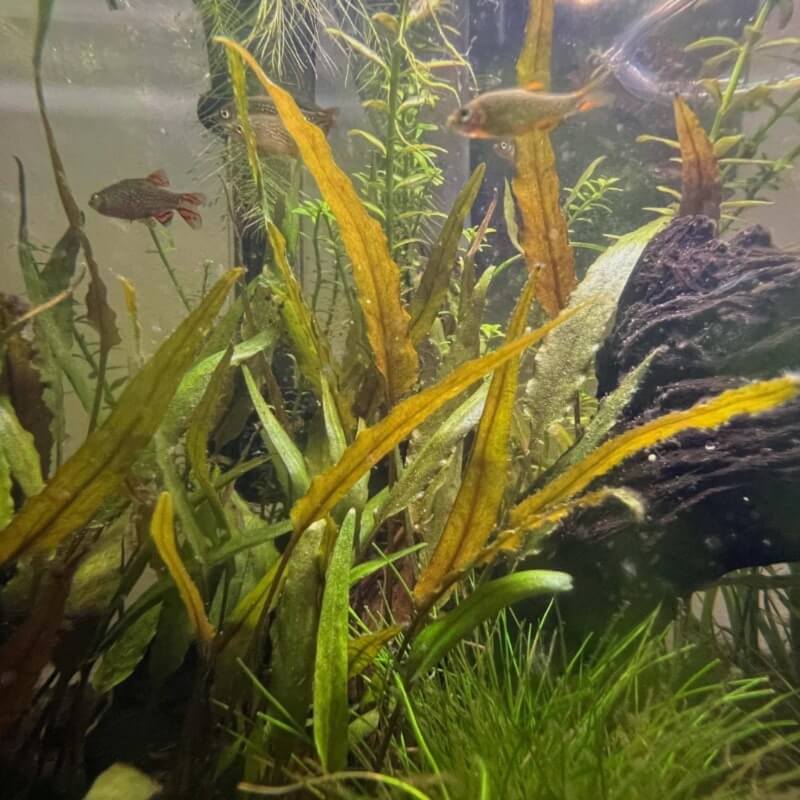
Advantages of Keeping Cryptocoryne Spiralis
Besides the aesthetic benefit of keeping this aquarium plant, it also provides the additional benefit of removing harmful organic compounds, creating a much cleaner environment for any aquarium inhabitants.
This plant will grow much quicker compared to slow-growing plants, like Anubias Frazeri, and its growth can be accelerated by an increase in light intensity. This plant's accelerated growth rate can do wonders if you’re trying to remove harmful toxins in an aquarium.
However, this plant still does not grow as quickly as faster-growing stem plants, so you’ll want to always be on the lookout for potential algae outbreaks. If an outbreak occurs, you can identify the type of algae by using our freshwater algae guide.
The plant's long narrow leaves create the perfect environment for peaceful nano fish to rest on, and the plant creates a unique canopy that can provide coverage for peaceful invertebrates, such as orange pumpkin shrimp or black mystery snails.
Appearance
Without a doubt, the aesthetic of this plant is its most apparent feature. Juvenile plants might have a brownish tint to them, but as they mature into adults, they’ll appear to be a much brighter green.
Bright lights will bring out the best coloration but always monitor a freshwater aquarium closely after a change in light intensity or duration. If you notice algae starting to form, reduce the intensity or duration.
Unhealthy plants will turn into a darker shade of brown, and the tips of the plant’s leaves may begin to appear as if they are melting away. Leaves that turn yellow are often early indicators of nitrate or potassium deficiency, so you’ll want to examine the plant periodically to correct any nutrient-related issues.
The roots of this plant should appear to be an opaque-white while unhealthy roots will demonstrate a translucent-brown color.
🛒 Shop Freshwater Fish on Light Fish
Size & Growth Rate
When given an adequate tank, Cryptocoryne Spiralis can grow quite large, adult versions of this plant can grow to reach up to 2 feet in height.
It grows at a moderate pace and depending on the intensity of your lighting, new leaves can emerge in about 1-2 weeks after the plant has fully transitioned into its aquarium. This plant will grow vertically, and new leaves will form near the roots of the plant.
Although not quite as fast-growing as other aquatic plants such as Hygrophila Salicifolia, increasing the light intensity will cause the plant to grow faster. However, stronger light can be a recipe for disaster if you don’t have a sufficient amount of nutrients, CO2, surface agitation, and existing plant biomass. If you don’t have a high-tech setup, you do not need to worry, as the growth rate of this plant under low to medium lighting (1-2 watts per gallon) will be sufficient for most aquarists.
Cryptocoryne Spiralis Care
You’ll want to re-create the native habitat of Cryptocoryne Spiralis as closely as possible to give yourself the best chance of success at caring for this species.
This plant is considered a weed in the rice paddies of western India, where waters tend to be slow-moving and stagnant.
Hobbyists will be pleased to know that this plant adapts well to most water conditions, as it’s one of the easiest Cryptocoryne species to care for.
Aquarium Tank Size
We recommend an aquarium that’s at least 15 gallons in size if you plan on keeping Cryptocoryne Spiralis While technically this plant can do well in almost any aquarium, once settled, this plant will grow to be quite large.
Having a larger aquarium means less-frequent trimming and pruning, and the increase in space will help your aquarium from looking overgrown. But let’s face it, if you’re going for a jungle-like appearance, there’s nothing wrong with keeping a bunch of Cryptocoryne Spiralis plants in a nano tank!
Water Parameters
One of the best parts about owning Cryptocoryne Spiralis is that once you plant it, there’s very little you need to do in terms of care and maintenance. If your Cryptocoryne Spiralis can survive for a few weeks after transitioning to your aquarium, there’s not much else that’s needed in terms of day-to-day care.
In the wild, these plants live in warm-water conditions, so you’ll want to have a reliable aquarium heater . Warmer waters also tend to stimulate growth rates, and purchasing an aquarium thermometer can assist in keeping temperatures consistent over extended periods of time.
That being said, you’ll want to aim for the following conditions if you plan on keeping Cryptocoryne Spiralis.
Temperature: 73°F-78°F
GH: 1-20 dGH
KH: 1-18 dKH
pH levels: 6.0-8.0
Fertilization
Cryptocoryne Spiralis doesn’t require much in terms of fertilization. In most cases, under low to moderate lighting, the waste produced by tank inhabitants will provide enough nutrients for your Crypt Spiralis to grow.
However, if you want to kick it up a notch and crank up your light intensity, you’ll want to make sure you’re dosing additional nutrients. Potassium sulfate, monopotassium phosphate, and potassium nitrate can be dosed directly into the water column. If you choose to go the liquid-fertilizer route, products such as Seachems Flourish should do the trick, although they tend to be a bit pricier.
Although not required, CO2 can help promote faster growth and you can inject CO2 directly into the aquarium through a CO2 reactor. A liquid solution such as Flourish Excel is a viable substitute.
Substrate
We strongly recommend a gravel-based substrate for Cryptocoryne Spiralis. Nutrient-rich substrates such as CaribSea’s eco-complete will add more nutrients into the water column that will eventually be absorbed through the roots of your Crypt Spiralis plant.
If you prefer a different type of gravel substrate, root tabs can be added to the aquarium as an additional nutrient source. Overall, Crypt Spiralis isn’t very picky when it comes to substrates, just make sure that the roots are submerged, and in time, the plant should take hold.
Lighting
One of the nice parts about owning Cryptocoryne Spiralis is that you don’t need to spend a lot of money on a high-end lighting fixture. This plant can grow as long as there is an available light source.
We recommend a light that’s at least 1-2 watts per gallon if you plan on adding a Crypt Spiralis. Stronger lighting can be used, but if you don’t have a lot of existing fast growing plants, and a nutrient-dosing strategy in place, you’ll create the perfect environment for an algae bloom.
How to Plant Cryptocoryne Spiralis
Planting Cryptocoryne Spiralis is straightforward, you’ll want to bury the roots of the plant, but make sure to keep the crown exposed. The crown is the area of the plant where the stems join the roots.
After about a week or so, the roots will begin to grow deeper into the substrate, and their chance of uprooting will lessen. If your Cryptocoryne Spiralis uproots itself, re-plant it, eventually you’ll get it just right and it should take hold.
Purchasing a quality pair of aquarium tweezers will make planting much easier, as you’ll be able to position the roots in a more precise manner.
🛒 Shop Aquarium Plants Fish on Light Fish
Trimming & Propagation
Propagating and trimming Cryptocoryne Spiralis is a breeze! All you need to do is snip the stem as close to the base as possible. You can either discard the cut portion or re-plant it, once again exposing the crown and burying the roots.
It’s good practice to regularly trim your plants, after a good trim, they should produce more runners and grow more stems, giving you plenty of plants to either re-plant or sell to other hobbyists.
Leaves that are cut will not re-generate, and stems that have been snipped away from the roots will eventually die off.
Tank Mates
The sky’s the limit when it comes to Crypt Spiralis tank mates. We recommend other easy-to-care-for plants, such as Hygrophila Salicifolia, Anubias Frazeri, or Taiwan Lilys.
If you’d like to switch up the color a bit, there are plenty of easy-to-grow red aquarium plants that will add a pop of color to any planted tank.
Peaceful schooling fish look great in a planted tank, and some of our favorite species include:
- Purple Moscow Guppies
- Cardinal Tetras
- Green Neon Tetras
- Blue Diamond Discus
- Platinum Parrot Fish
- Galaxy Koi Bettas
- Blackbar Endlers
- Queen Arabesque Plecos
Invertebrates will also enjoy the coverage that Crypt Spiralis provides, options like Orange Pumpkin Shrimp or Black Mystery Snails make great additions to a planted aquarium.
There are some species that you’ll want to avoid though, steer clear of any larger, aggressive fish, like Electric Blue Jack Dempseys or Red Dragon Flowerhorns, as these Cichlids will pick at and knock over your prized plants.
Conclusion
If you can get your hands on Cryptocoryne Spiralis, you won’t be disappointed. Its versatility, attractive appearance, and ease of care make this a must-have for any freshwater aquarium hobbyist.
Now that you’re well equipped with all of the care and maintenance that this plant requires, do you think this will be the next addition to your planted tank? Let us know by signing up on our community forum where we discuss plant keeping and general aquarium care.
December's Giveaways on Light Fish


